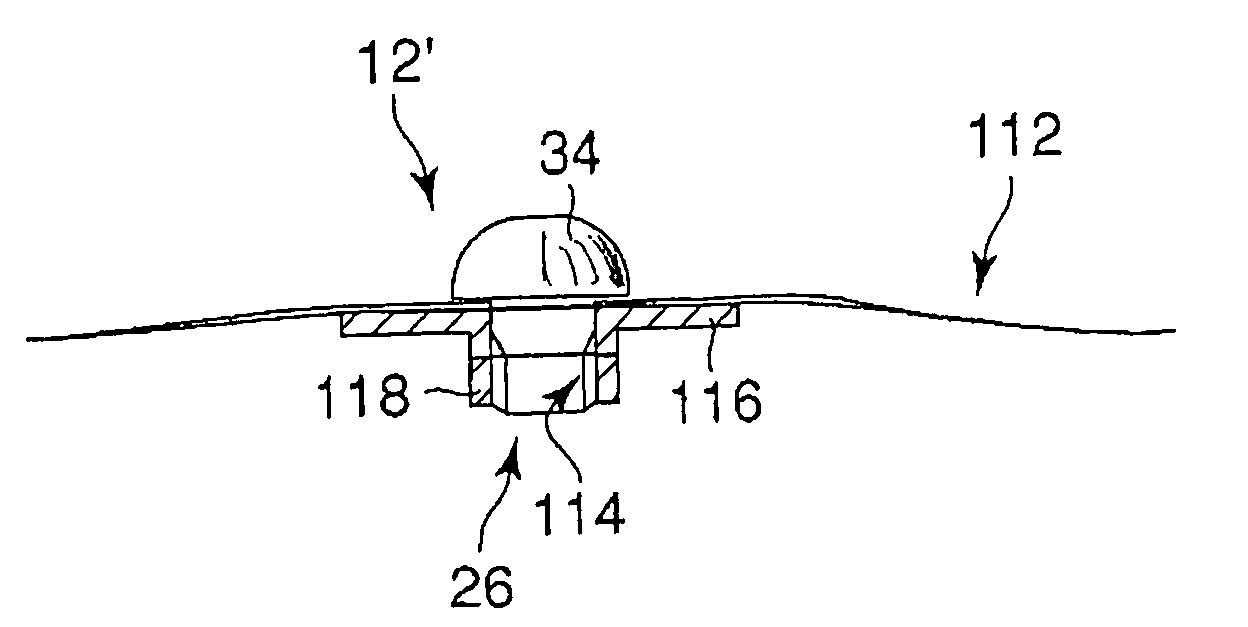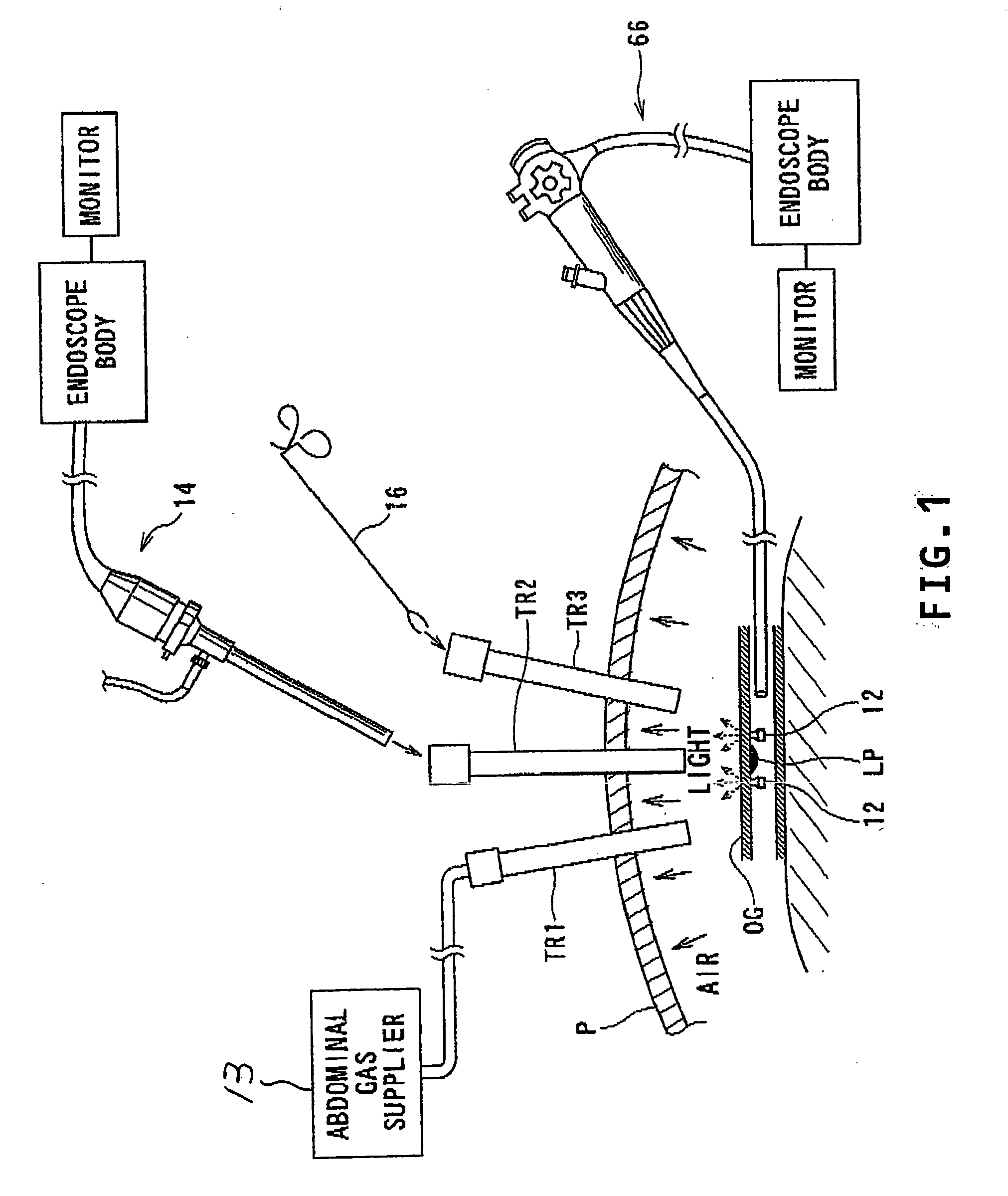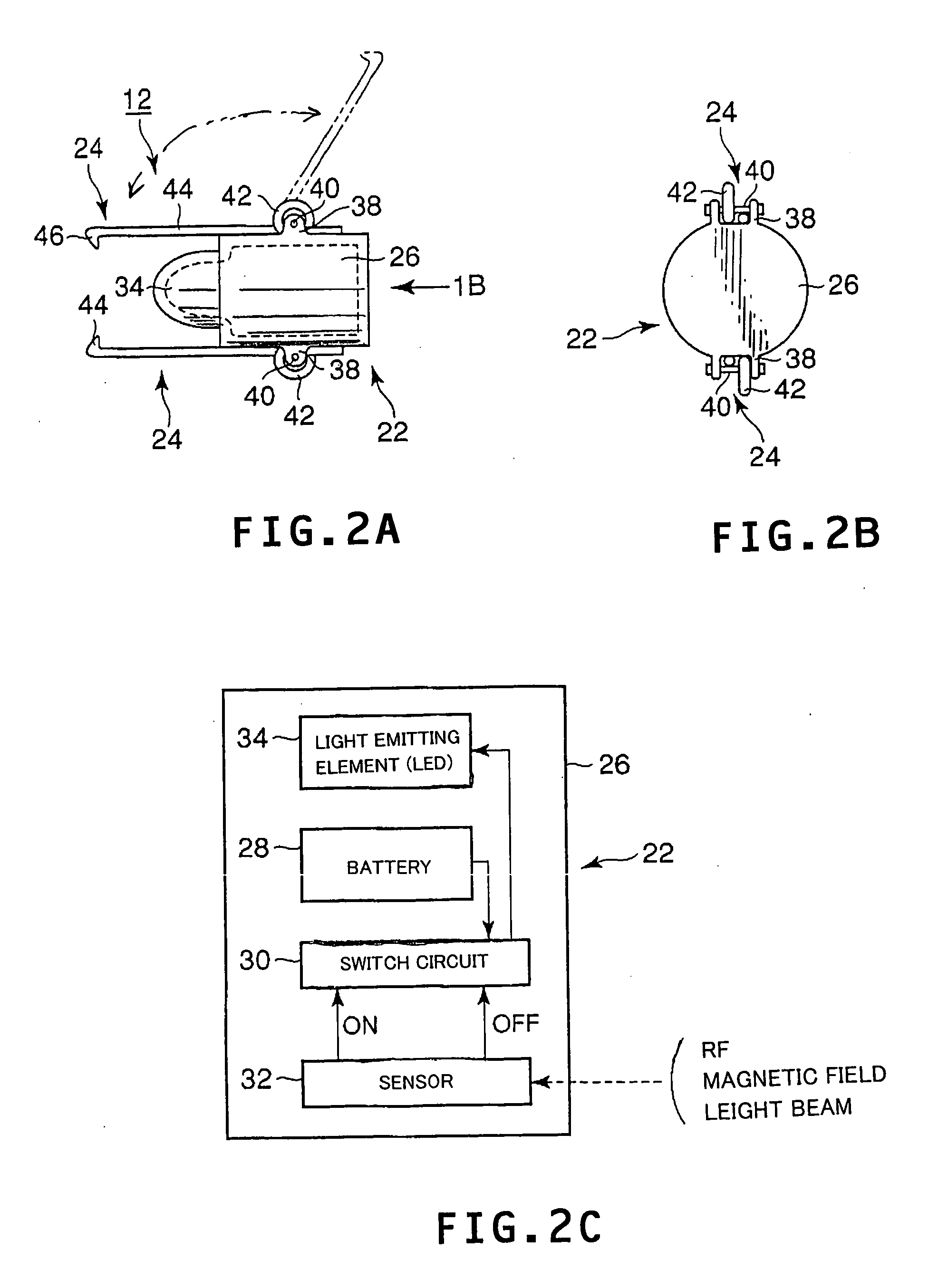Lesion identification system for surgical operation and related method
a technology for identifying systems and lesions, applied in the field of lesion identification systems for surgical operations, can solve the problems of increased labor hours, difficult to take a proper response to an observation image of the tube with the magnet for the organism, and dissemination to occur
- Summary
- Abstract
- Description
- Claims
- Application Information
AI Technical Summary
Benefits of technology
Problems solved by technology
Method used
Image
Examples
first embodiment
[0076] (First Embodiment)
[0077] First, a first embodiment is described with reference to FIGS. 1 to 9.
[0078] As shown in FIG. 1, a lesion identification system for surgical operation of the presently filed embodiment is comprised of light source clips 12 (see FIG. 2A) each serving as a light marker (marker) having a light emitting function and a clipping function, an endoscope (first endoscope device) 66 (see FIG. 7A) serving as a soft scope for use in indwelling the light source clips 12, which will be described later, in the vicinity of a lesion, and an endoscope (second endoscope device) 14 (see FIG. 3A), serving as a rigidscope for surgical operation, which detect lights emitted by the light source clips 12.
[0079] In FIG. 1, further, reference P designates a patient (organ); OG designates an organ of the patient P to be targeted; and LP designates a lesion of the organ OG. Also, trocars TR1 to TR3 are inserted to a site of the patient P to be treated during operations. Among t...
second embodiment
[0117] (Second Embodiment)
[0118] Next, a second embodiment is described with reference to FIGS. 10 and 11. This embodiment is a modified form of the first embodiment and the same component parts as those described in the first embodiment bear like reference numerals to omit detailed description. Hereunder, the way of such omission may similarly apply to third to ninth embodiments.
[0119] As shown in FIG. 10A, a light marker 12′ of a lesion identification system for surgical operation of the presently filed embodiment differs from the light source clip 12, serving as the light marker, of the first embodiment in shapes of the engagement members 24 and the receiver case 26. The receiver case 26 has the same internal structure as that of the first embodiment described above.
[0120] An LED 34 of the light marker 12′ is formed in a hemispheric shape. A center of the LED 34 and a center of the receiver case 24 are aligned on the same axis and a diameter of the LED 34 is formed in a larger ...
third embodiment
[0128] (Third Embodiment)
[0129] Now, reference is made to FIGS. 12 to 15 to describe a third embodiment.
[0130] As shown in FIG. 12A, a loop-shaped light marker 130 is employed in place of the light markers (light source clips 12) described with reference to the first embodiment. The loop-shaped light marker 130 is comprised of a tubular holder 32, a light source 22 mounted inside the holder 132, and a light guide 134 through which a light emitted from the light source 22 is guided to an outside of the holder 132.
[0131] The light guide 134 is comprised of a tubular light guide base 136 that is retained by caulking a distal end of the holder 132, and a light guide 138 having both ends disposed in an inner aperture of the base 136 and mounted to the same to allow the light guide 138 to extend from the base 136 in a loop shape to serve as a loop-shaped light source. That is, the base 136 has a distal end that is fixedly secured to the holder 132 by means of a first caulked portion 140...
PUM
 Login to View More
Login to View More Abstract
Description
Claims
Application Information
 Login to View More
Login to View More - R&D
- Intellectual Property
- Life Sciences
- Materials
- Tech Scout
- Unparalleled Data Quality
- Higher Quality Content
- 60% Fewer Hallucinations
Browse by: Latest US Patents, China's latest patents, Technical Efficacy Thesaurus, Application Domain, Technology Topic, Popular Technical Reports.
© 2025 PatSnap. All rights reserved.Legal|Privacy policy|Modern Slavery Act Transparency Statement|Sitemap|About US| Contact US: help@patsnap.com



